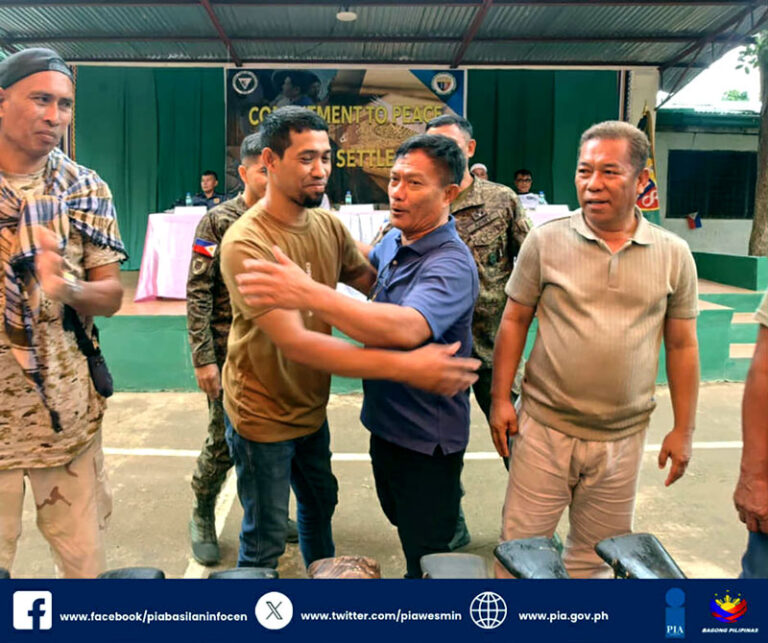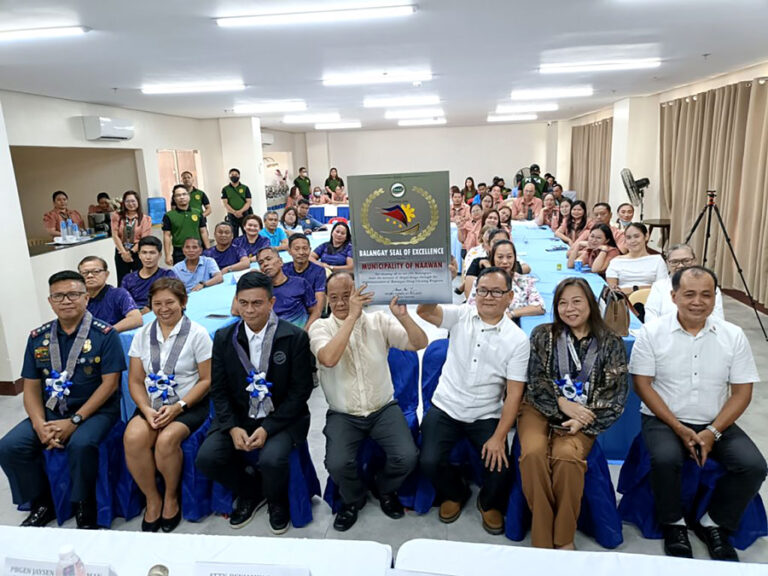ZAMBOANGA CITY – Police are set to file criminal charges against 5 suspected Abu Sayyaf militants being linked to the twin suicide bombings of a cathedral in the southern Philippine province of Sulu following their surrender to security forces sent to hunt them down.
National Police Chief Oscar Albayalde said among those who surrendered is Kammah Pae, who was among those who coordinated the January 27 deadly bombings of Our Lady of Mount Carmel Cathedral in Jolo town that killed and wounded dozens of people.
He identified the four other suspects as Salit Alih and Albaji Kisae Gadjali, Rajan Bakil Gadjali and Kaisar Bakil Gadjali.
“The five surrendered due to the massive hot pursuit operations by troops from the Patikul Municipal Police Station, 52nd Special Action Company, Sulu Provincial Mobile Force Company, 14th Regional Mobile Force Battalion, CIDG9, RIU9, and 35th Infantry Battalion of the Philippine Army,” Albayalde said in a news conference Monday.
He said security forces also destroyed an improvised explosive and other bomb components recovered from Pae’s house in Patikul town. “During panelling at the house of Kammah, EOD (Explosive Ordnance Disposal Team) / K9 and SOCO (Scenes of Crime Officer) discovered assembled IED (Improvised Explosive Device) and IED components which were subsequently disrupted,” he said.
Patikul is a known stronghold of the Abu Sayyaf group, whose leaders have pledged allegiance to the Islamic State of Iraq and Syria or ISIS.
Albayalde said Pae’s group is facing charges of multiple murders and multiple frustrated murders. And security forces are still pursuing Abu Sayyaf leader Hajan Sawadjaan, believed to be the chief architect in the cathedral bombings, and over a dozen other militants.
Timeline
He said Sawadjaan was a key player in the daring attacks and elaborated on the timeline and sequence of events leading to bombings which were carried out by an Indonesian couple.
“Beginning on January 8, 2019, a certain Muksin and Usman attempted to assemble an IED in Barangay Latih in Patikul, but later abandoned the effort. And four days later, Sawadjaan met with Usman and Barak in Sitio Bastiong in Patikul and gave them funds for the bombing mission. On January 21, 2019, an unidentified Asian couple, believed to be holed in Lampinigan Island (in Basilan province) for a few days, sailed to Jolo on January 24 by pump boat. Upon arrival in Jolo, the couple boarded a tricycle to Caltex Tiam at 7:10 p.m. and at 7:30 p.m., the couple were met by suspects Papong, Awag and Radjan at Caltex Tiam and all of them boarded Awag’s jeepney along with five minor boys, who later disembarked along the way.”
“Upon reaching Usaw in Barangay Langhub in Patikul near the house of Usman, the group was joined by Kammah, Barak, Makrim and Usman and later proceeded Sitio Bastiong in Barangay Langub. The couple alighted at Bastiong and walked towards the forested area escorted by Kamah and Barak where they met Sawadjaan to further plan the bombing. Also present during the planning were Barak, Kammah, Awag, Usman, Makrim, Isal, Radjan and Papong. At 5:00 p.m. on January 26, the couple, each toting black trolley bags were escorted to Barangay Latih in Patikul by Usman, Barak and nine other unidentified armed men where the couple boarded Awag’s jeepney to Jolo. Upon reaching Jolo at 5:10 p.m., the couple disembarked in front of Suleco (Sulu Electric Cooperative) Building to an undisclosed location within Jolo. At 8:28 a.m. the following morning, it is believed that the Indonesian woman detonated the 1st IED inside the Jolo cathedral while the man detonated the 2nd IED at the church entrance seconds later,” Albayalde explained.
Explosives
He said from bomb fragments and components recovered at the church, forensic technicians have reconstructed the two detonated IEDs made from common GI (Galvanized Iron) pipes that served as casing that contained possibly ammonium nitrate-fuel oil (ANFO) compound as primary explosive charge and possibly boosted by secondary high explosives possibly PETN, TNT or RDX (subject to further laboratory analysis) that characterized the shattering effect of the explosions.
PETN is short for Pentaerythritol tetranitrate, a major ingredient of Semtex or general-purpose plastic explosive containing RDX (Royal Demolition Explosive) which is cyclotonite, a powerful explosive, and PETN – it is used in commercial blasting, demolition, and in certain military applications. TNT is also known as trinitrotoluene.
“This particular type of IED, by design, is identified with the Abu Sayyaf group as nine similar IEDs have been involved in at least five recent incidents in Basilan and Sulu in 2016 and 2017,” Albayalde said, citing an attack in Jolo town on March 12, 2017.
He said 2 similar IEDs were also detonated by the Abu Sayyaf in Lamitan City in Basilan on March 19 and 20, 2017, while 4 more similar IEDs were defused by the military in Al-barca town also in Basilan on May 20, 2016. “The signature of the Abu Sayyaf group, therefore, is patently present in the IED used in this latest terror attack in Jolo. The investigation of the Jolo cathedral explosion is far from over as there are more pieces of evidence that need to be carefully examined to test its consistency with other facts and circumstances surrounding the incident,” he added.
Operations
Security forces were still pursuing over 100 militants who broke into smaller groups in Sulu’s hinterlands. Over 2 dozen soldiers had been killed and wounded in fighting Abu Sayyaf since the deadly cathedral bombings. Five soldiers had been confirmed dead and nearly two dozen more injured in clashes in Patikul town. The fighting triggered an exodus of civilians in villages there.
There had been no reports of civilian casualties, but the Joint Task Force Sulu said they have received intelligence reports that a foreign militant, who goes by his nom de guerre Abu Black, was killed in the fighting, but his nationality remains unknown. Another Abu Sayyaf commander, Idang Susukan, was also wounded in the clashes and lost his finger, the report added. The regional military headquarters, Western Mindanao Command, did not release any information about the campaign against the Abu Sayyaf. But on Sunday, sealed caskets of slain soldiers were spotted being transported by soldiers to the Philippine Air Force base in Zamboanga. (Mindanao Examiner)



